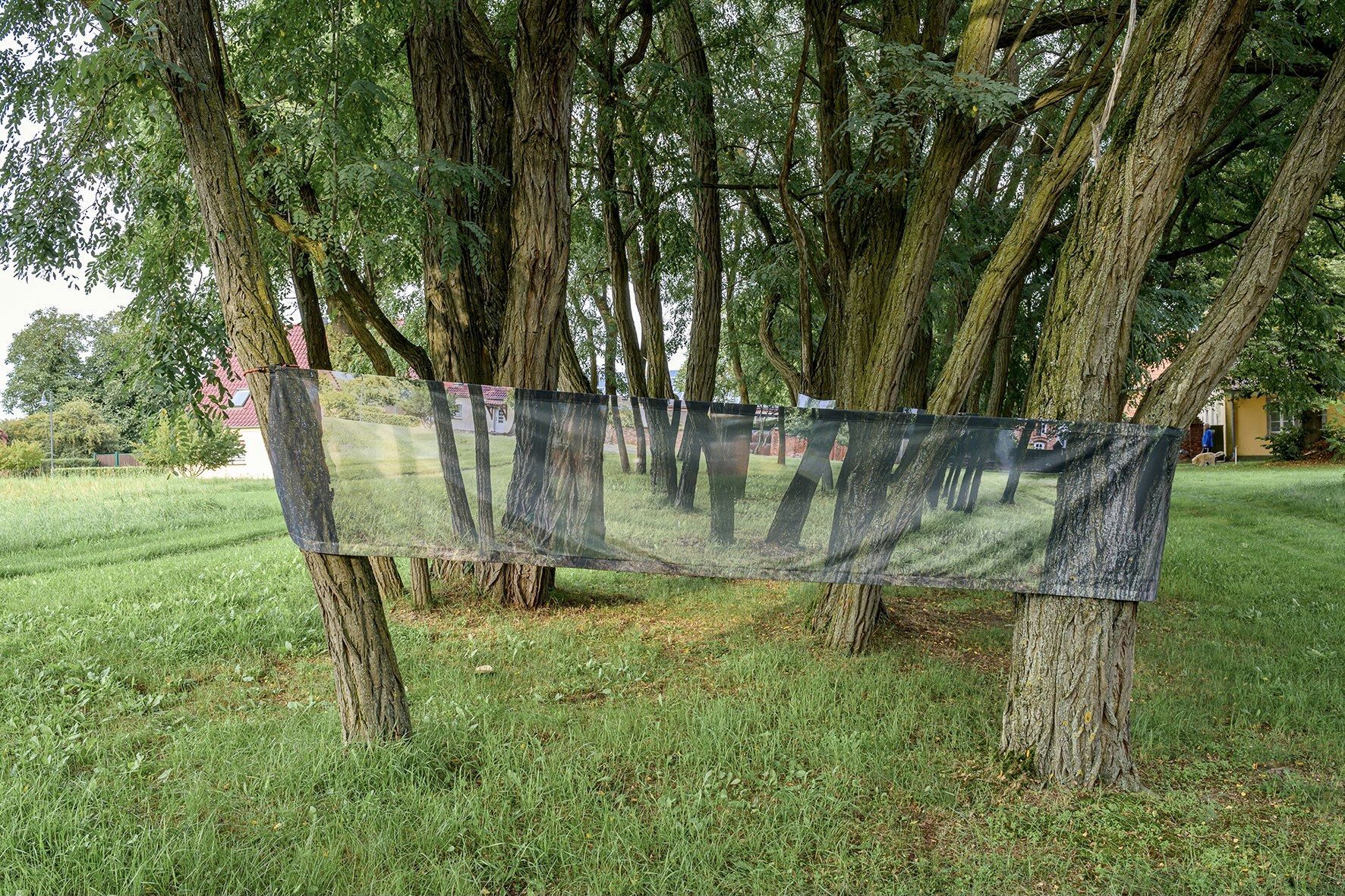Installation SHIFT | 4 fabric panels, flag fabric | formats height each 70 cm, width 2 x 14m, 13 m, 11m
SHIFT
Site-specific installation
2021, LANDschafftKUNST Biennale VIII, Neuwerder/Havel, Brandenburg, Germany
2022 Free University Berlin, University Days
The site-specific installation SHIFT was specially conceived for the Biennale VIII LANDschafftKUNST in Neuwerder. The starting point for the photographic work is a Robinia grove on the outskirts of Neuwerder. The elongated small forest, without branches or bushes, offers an unobstructed view of the horizon from all sides. This line, only interrupted by the tree trunks and the resulting axes of view, is the central approach to the work SHIFT.
In the photographic process, the horizontal line, as well as the space between individual, previously defined trees, determined the visual axis and the respective detail. The resulting photographs were merged on the computer into different panoramas. In this process four horizontal panoramas with lengths between 11 and 14 meters were created. They were printed on fabric banners and then installed in the grove. Between the amounted fabric panels, perspectives are created that allow a free view of the landscape and act as an independent image in the installation.
The cameraʼs perspective of the situation in the small forest is a static view. Taking the individual sections from a particular point of view is an artistic decision. However, the photographs, assembled into panoramas and installed in the grove, are not identical when compared with the real image. Each movement changes the perspective and shifts the real background in alignment with the fixed photographic image. The title SHIFT can be interpreted in many ways and can be described as a perceptual leap in the sense of the realized work. Perception and focus are continuously shifted in a so-called “shift in perception”. The image within the image, the photograph, which is located in the reality of the depicted itself, questions the correspondence between image and reality. It is like looking into a mirror, demanding comparison with the reflected image and correction of reality.
In this work, the artist refers to essential questions about photography, which we constantly encounter in an everyday life determined by photographic images: Do photographs depict reality? How do we evaluate a photograph for its reality content? Where does the image overlap with our perception and where not? Conversely, the question also arises: What influence does our perception have on the world?

